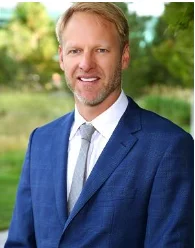
The thing that makes Colorado one of the most attractive places to live is also the thing that makes it risky: the sun. With plenty of warm, sunny days and high elevations that increase the intensity of the sun’s ultraviolet (UV) rays, the state leads the nation in an unwanted category: the per-capita rate of skin cancer.
That’s not good news. But there is a bright spot. It’s called Mohs micrographic surgery, a delicate procedure to remove cancerous tissue in patients with some skin cancers, including two types – basal cell and squamous cell carcinomas – that arise in the epidermis, or outer layer of the skin. The procedure will be available to patients at the new UCHealth Cherry Creek Medical Center at 100 Cook Street in Denver.
Mohs surgery has very high success rate

“Mohs surgery is one of the most effective ways of extirpating tumors of skin cancers,” said Dr. Misha Miller, who practices at the UCHealth Dermatology Clinic on the Anschutz Medical Campus, and is an assistant professor in the Department of Dermatology at the University of Colorado School of Medicine.
The procedure achieves success rates between 98% and 99% for basal and squamous cell carcinomas, added Miller, who will be in charge of Mohs surgeries at the new Cherry Creek facility.
Performing Mohs surgeries requires a specialized set of skills, which Miller built during fellowship training in the procedure at the CU School of Medicine. These include surgery, pathology and wound reconstruction. All three come into play during the procedure.
Mohs surgery part of a multi-stage treatment
Read more stories about providers, patients and services at the UCHealth Cherry Creek Medical Center
Most patients get local anesthesia for the outpatient procedure. Miller then uses a scalpel to carefully cut a thin layer of tissue and a narrow rim of normal-appearing skin to remove a cancerous lesion. After doing so, she prepares the tissue she removed. The Mohs Laboratory then processes the tissue into slides. Putting on her pathologist’s hat, Dr. Miller examines the tissue under a microscope for lingering cancer cells. If she finds them, she removes another thin layer and examines the results. The process continues until the area is cancer-free.
Most patients require one or two “passes” with the scalpel, Dr. Miller said. She also takes care to remove as little healthy tissue as possible during the procedure.
“I can cut out a skin cancer with only a tiny rim of normal tissue taken,” Dr. Miller said.
Repairing the skin

The final stage involves reconstructing the wound left by the surgery. Miller said she handles about 90% of reconstructions herself, using stitches, skin grafts taken from another area of the patient’s body, or skin flaps taken from an area next to the wound. She also collaborates with UCHealth ear, nose and throat physician Dr. Adam Terella, who has specialized training in plastic and facial reconstruction surgery.
At the Cherry Creek Medical Center, Miller and Terella will act as the reconstructive team for cases involving the head and neck. For cases that involve the eyes, UCHealth oculoplastic surgeons Drs. Eric Hink and Sophie Liao will complete the reconstruction.
Catching skin cancer early

As with all procedures, a good deal of the success of Mohs surgery relies on early detection. Miller stressed the importance of patients recognizing the warning signs of basal cell and squamous cell carcinomas and contacting a dermatologist about suspicious lesions.
Basal cell carcinoma is the number-one skin cancer. It very rarely metastasizes, or spreads, but left untreated, it will invade and destroy local tissue, leaving deeper and wider damage as it advances, Miller said. The most prominent signs of the cancer are sores that won’t heal and may bleed. These look like pearly-pink bumps or marks that resemble scars.
“If the lesion bleeds and won’t go away or you have a scar with no memory of injury, you should definitely see a dermatologist,” Miller said.

Squamous cell carcinomas are less common than the basal cell variety, said Miller, adding that they are more likely to spread, although that’s still rare. They look like a red, crusty bump on the skin and sometimes hurt when they get a bump or pressure – a sign that the cancer has moved into the nerves.
The most deadly form of skin cancer is melanoma. It springs from the melanocytes, the cells that give us our skin pigment. Miller said she rarely uses Mohs surgery to treat melanoma, but emphasized how important it is to recognize its signs, which include dark, irregularly shaped patches of skin. People should take particular care to contact a dermatologist if a patch is bigger than 6 millimeters, gets larger and darker and begins itching or tingling, Miller cautioned.
More treatment opportunities at Cherry Creek
Basal cell and squamous cell carcinomas are largely the result of skin damage people sustained over years, which helps to account for the fact that most of her Mohs surgery patients are in their 60s or older, Miller said. The opening of the Cherry Creek Medical Center offers new opportunities to extend the procedure to more patients. It’s an additional site, closer to home for many, of course. Beyond that, Dr. Miller hopes to expand her work with Dr. Terella.
Today, she noted, most reconstruction cases that involve him aren’t scheduled the same day of surgery. At the new facility, she and Terella plan to work “in tandem” more frequently, with him taking care of reconstruction the same day as surgery. That will free her to move on to the next patient.
“I’ll do Mohs while he does reconstruction,” Miller said. “That will enable us to care for more patients.”
That kind of partnership has long been a hallmark of the multidisciplinary care patients receive at UCHealth hospitals and clinics. It’s a plus for providers, too, Miller said.
“Collaboration leads to stronger ideas of how to help patients,” she said.
